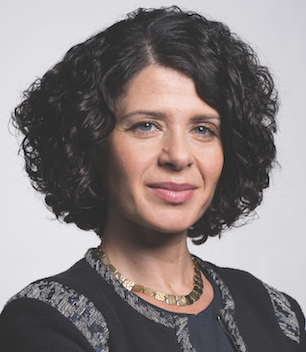Editor’s Note: This is the second in a series of articles. To read the first article, click here.
The women leaders interviewed for this series are clear about today's capital market opportunities and risks. They are embracing both as the investment industry transitions toward a low carbon economy with greater emphasis on the economic value of intangible corporate assets and social impact enterprises.
These women are trendsetters and innovators, using their industry experience and leadership platforms to articulate a powerful message regarding the rapid growth in the use of non-financial data to drive investment performance and risk management.
Increase Portfolio Transparency
 Tanya Svidler became director of ESG Solutions at Morningstar in February 2017. Among her responsibilities are new business and product development across ESG, global sustainability and impact investing for active, passive and index portfolio strategies. Prior to joining Morningstar, Tanya was a vice president at MSCI, responsible for the product development and strategic oversight of MSCI’s ESG Index family. Prior to MSCI, she was a director of impact investing at Global Brigades, focused on the expansion of impact programs and investments in Central America and West Africa. Earlier in her career, Tanya spent 14 years in asset management, primarily at Franklin Templeton, first on the investment side, then building international institutional business in 26 countries across EMEA.
Tanya Svidler became director of ESG Solutions at Morningstar in February 2017. Among her responsibilities are new business and product development across ESG, global sustainability and impact investing for active, passive and index portfolio strategies. Prior to joining Morningstar, Tanya was a vice president at MSCI, responsible for the product development and strategic oversight of MSCI’s ESG Index family. Prior to MSCI, she was a director of impact investing at Global Brigades, focused on the expansion of impact programs and investments in Central America and West Africa. Earlier in her career, Tanya spent 14 years in asset management, primarily at Franklin Templeton, first on the investment side, then building international institutional business in 26 countries across EMEA.
She is excited about the carbon impact assessment, which is going to launch at the start of Q2 in Morningstar Direct in addition to the sustainability ratings system (“The Globe Ratings”) that launched in 2016. “Both have been developed in conjunction with our ESG research partner, Sustainalytics, to support investors and advisors in their due diligence process for sustainable portfolio construction,” says Svidler.
“Leadership success for me is to understand what role I can play that creates the most leverage in collectively advancing sustainable finance.” Svidler continues, “I feel that my strength is in the ability to identify what would create the biggest impact on sustainable investment growth.” Her goal is broad industry adoption of a more meaningful long-term investment approach that includes ESG factor analysis.
How are these women leaders different from many of the men in financial services with similar experience and credentials? These men also believe that economically sustainable capital market investing is in everyone’s best interest. The difference, I believe, is the perception of investment risk and portfolio impact related to the integration of ESG factors. These women believe there is at least as much risk to sustainable long-term performance in not including ESG factors along with traditional risk and return metrics, a perspective that numerous industry studies in recent years support. Many men believe that ESG factors do not contribute to portfolio performance and investment risk and focus more on traditional risk and return metrics.








